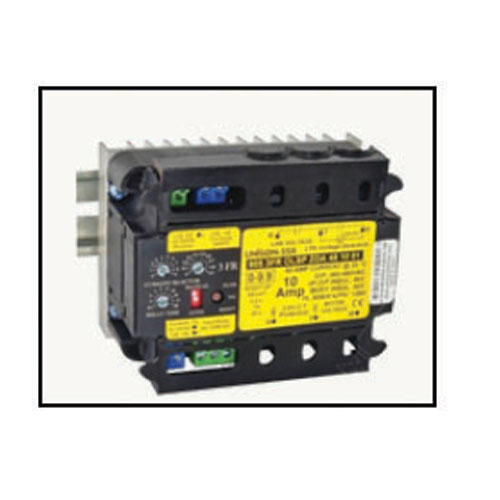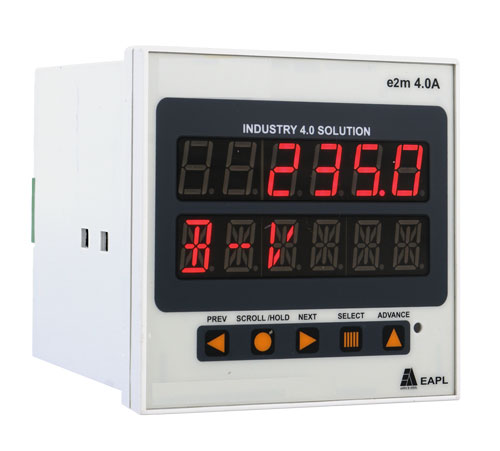Schedule a Call Back
High Speed Steel - Awe Inspiring!
 Technical Articles
Technical Articles- Jan 25,14
No other Steel grade invites as much awe from producers to users alike, as High Speed Steel (HSS) does. It all started in 1900 at the World Exhibition in Paris, where Frederick Taylor and Maunsell White of Bethlehem Steel, USA exhibited a new cutting tool. Spectators and industrial observers were astonished and amazed to view a tool cutting at speeds of 60 to 80 mtr per minutes; the nose of the tool getting dull red hot, but still going on cutting; indicating the tool's capability of retaining its hardness even in dull red hot condition. A new steel grade just arrived that day, which subsequently changed the face of cutting tools. Its capability of cutting at high speeds coupled with its ability to retain hardness at dull red heat, gave it the name "High Speed Steel". What Taylor and White exhibited that day was steel having 1.85% C, 0.15% Si, 0.30% Mn, 3.8% Cr and 8.0% W, and was the forerunner of modern high speed steels.
The first alloy that was formally classified as "High Speed Steel" is known by the AISI designation TI (18-4-1 grade), which was introduced in 1910. Although Molybdenum rich HSS (AISI MI grade) had been in use since 1930, shortage of tungsten and its prohibitively high price during WW-II encouraged development of less expensive alloys, substituting molybdenum for tungsten. Development of M2 grade (6-5-4-2) put it on par with, and in certain cases even proved better than tungsten based T1. Another alloy M7, which has higher molybdenum content, does possess greater toughness and wear resistance than M2; and yet another variant, containing cobalt is M42-a super high speed steel grade. Table 1 tabulates commonly used grades of HSS, along with their nominal chemical composition. What made HSS so special was that it endowed industrial users with a material having a tough matrix, plus the associated dispersion of highly wear resistant high hardness carbides; which together provided an optimum and useful range of properties over wide range of temperatures; encountered during metal cutting operation.
Role of Constituents in HSS
HSS has been graded in T and M series depending upon whether that are tungsten or molybdenum based. The common alloying elements added to the Fe-C System to constitute HSS are tungsten, molybdenum, chromium, vanadium and cobalt.
(a) Tungsten and Molybdenum: they behave in same manner by promoting wear resistance as well as red hardness. It has been observed that the cutting efficiency of HSS increases in a linear manner as the percentage of either element increases. Molybdenum may be used to replace tungsten at the rate of 1 % for every 1.5 % of tungsten.
(b) Chromium: addition of 4% chromium is customarily made to all grades of HSS basically to promote depth in hardening. Chromium is present in the form of carbides in the annealed steel, which dissolves into the austenite during the hardening cycle, thus becoming one of the primary sources of martensite in the quenched tool. However; it has no role to play in secondary hardening.
(c) Vanadium: vanadium forms extremely hard and stable carbides such as VC or V4 C3, which normally does not go into solution below 1150?C; and thus creates a very effective barrier as well as means of limiting grain growth.
(d) Cobalt: cobalt is present only in selected grades of HSS up to a limit of 12% max. Its main contribution is in promoting red hardness; however, at the cost of impact strength. Another point worth noting is that its presence at more than 8% visibly reduces hardenability of the HSS grades.
(e) Carbon: as in all tool steels, it is essential for the harden ability of the steel. The usual range of carbon is between 0.65 to 1.50 % in high speed steel; of which only about 30% goes into solution in the austenite. The hardness increases rapidly up to about 1 % of carbon; but the higher carbon grades usually show a marked fall in ductility. Here, one may wonder that if only 30% of the carbon available goes into solution; then why does HSS grades have up to 1.5 % carbon? The reality is that the balance carbon forms alloy carbides, which remain in the matrix as undissolved carbides, scattered all throughout. Higher the carbon, and higher the carbide forming alloy content, more is the volume of such carbides remaining un dissolved and distributing in the matrix. These carbides are extremely hard; and while the dissolved carbides provide the matrix hardness, these extremely hard undissolved carbides provide very high wear resistance to the alloy. One can judge it from the fact that vanadium carbides, for instance, have a hardness value in the range of 84-85 HRC. Similarly, other carbides have also high hardness values.
Cast Structure, Micro Constituents & Hot Working
The solidification of a melt of HSS starts with the formation of coarse primary eutectic carbides in the form of a cellular pattern of network with in the interdendritic zones, during solidification. Majority of the primary carbides such as M6C, M2C, MC, M7C3 and M23C6 types are formed during the eutectic reaction (M in these alloy carbides refers to combination of W, Mo, V, Cr, as well as Fe elements). Out of these, M6C type eutectic carbides prevail in the tungsten grade; whereas M2C type carbides are prevalent in molybdenum type HSS. Elimination of the gross eutectic network of carbides is essential if a good quality cutting tools is to be produced. But the basic problem in HSS is that unlike cementite in ordinary steels, carbides in HSS are extremely refractory, and literally insoluble under ordinary annealing conditions. The only recourse of breaking down the eutectic carbide network is by extensive hot working involving up to 95% reduction in area. This becomes really problematic and extreme care needs to be taken to avoid centre bursting during the hot working process. Fig 1 shows the cellular pattern in the cast structure.
However, if one considers a normal requirement for say a 6" dia cutter blank to achieve 95% RA in hot working, it would be necessary to start with a 24" ingot. This is practically the limiting size of commercial HSS ingots; and one can only imagine that in case of a 9" or 12" size blank, one has no other option but to live carbide segregation or banding. In case of such tools as milling cutters, it is possible to make larger size blanks by upsetting; whereas for tools like hobs, that is not possible. Fig 2 shows carbide pattern after 65% reduction of area in forging, whereas Fig 3 shows the pattern after 90% reduction of area in forging. It is observed that with 95% reduction of area by hot working, the cast structure is completely broken down; and with subsequent process of appropriate annealing, it is possible to achieve uniform spheroidised carbide distribution, which is an utopia and not achievable with 70 or 75% area reduction by hot working; and the user has to bear with carbides segregation, or banding in such cases.
Heat Treatment
Once a tool is made, the next and the most vital step is the heat treatment. It is said that the quality of performance in a cutting tool is as good as the quality of heat treatment it goes through. Heat treatment of HSS is the most critical operation in its processing; and the line separating success and failure is very thin. There are several factors that have to be kept in mind while heat treating high speed steels.
(a) The hardening temperature has to be chosen keeping in view the use to which the tool is to be subjected to. For instance, tools for machining such as turning, planning or rough milling should be hardened from the highest permissible temperature for the particular HSS grade, in order to ensure that they achieve the best hot hardness properties, since the cutting edges may reach temperature as high as 600?C. Similarly, tools that are to be used at lower temperatures, or those requiring good impact strength, say for instance cold upsetting tools, should be heat treated from the lower side of the hardening temperature range.
(b) Although HSS have very high hardenability, the ones having cobalt in excess of 8% would have somewhat reduced harden ability, and if they have section thickness of more than 30 mm, would need to be quenched a bit differently to get proper hardness.
(c) Selection of hardening temperature must also take into account the original dimension of the stock from which the tool has been made. The degree of grain boundary melting increases with the degree of segregation. The larger the dimension of the stock, greater is the segregation, which in turn lowers the temperature of incipient fusion. For this reason, a lower hardening temperature should be chosen for high speed steel tools made from heavy sections. Even for dimension corresponding to 100 mm dia, a comparatively lower hardening temperature should be chosen. Heat treatment of HSS involves four stages. These are: Preheating, Austenitising, Quenching and Tempering
Preheating
HSS are high alloy, steels, and have comparatively lower thermal conductivity. They are therefore highly amenable to thermal shock. Sudden increase from room temperature to the austenitising temperature may cause the tools to crack. Moreover, there is a phase transformation that the steel undergoes as it is austenitised that results in a change in volume or density. If this volume change is non-uniform, distortion in the tool may occur. It is therefore customary to use two preheating in general, prior to austenitisation. First preheating is done usually at around 550?/600?C; and the second one at, around 850?C. In each of these stages of preheating, the tool is held at the temperature to ensure that the entire cross section of the tools attains the preheating temperature and get equalised. The immersion time during second preheating is invariably linked with the immersion time in hardening (high heat) bath.
Austenitising
The Austenitising temperature that is chosen depends upon the alloy content (grade) of high speed steel. It also depends on several other factors such as:
The most commonly used media of heating during austenitisation is the neutral salt bath. The salt bath is periodically rectified; using appropriate rectifier, to prevent decarburisation of the tool during heat treatment. Since tools and cutters are mostly austenitised as individual pieces, it is customary to use total immersion time as a period for austenitisation. For any grade of HSS, immersion time depends on the temperature of austenitisation as well as size/ section thickness of the component. Fig 4 shows the hardened microstructure of a properly heat treated M2 grade HSS. Fig 5 shows the hardened microstructure of an overheated M2 grade HSS (incipient fusion at the grains marked by an arrow).
Quenching
Once austenitisation is over, the next stage is quenching. Taking advantage of high hardenability of HSS, in order to minimise distortion, it is customary to first quench them in a molten salt bath maintained in the range of 550/570?C; just allowing sufficient time for the tool to attain the bath temperature, and then cool them in air. Care has to be taken in HSS where the cobalt content is more than 8%, coupled, with section thickness of 30 mm and above. They should be oil quenched after intermediate salt bath quenching.
Tempering
In the quenched condition, HSS contains between 25% to 40% retained austenite. It requires two consecutive tempering to transform retained austenite to martensite. Customary tempering temperature range varies from 530?C to 560?C depending on the HSS grade, where they are held between two to three hours in each tempering. It is however to be noted that transformation of retained austenite to martensite predominantly takes place during the cooling cycle after tempering; and therefore, at the end of second tempering, freshly formed martensite along with tempered martensite (martensite formed at the end of first tempering gets tempered during the second tempering) is prevalent in the microstructure. Fig 6 shows the microstructure at the end of second tempering. Obviously; a third tempering is a must in order to convert and temper the martensite generated at the end of second tempering.
Normally where maximum hardness is required, the third tempering is done at a temperature which is about 20?C lower than that of the previous two tempering. Alternatively, the third tempering temperature is selected to tone down the hardness value at the desired hardness level. It may be worthwhile to mention that since transformation of retained austenite to martensite takes place during the cooling cycle from tempering, the tools should be sent for the subsequent tempering only after they attain room temperature; and the subsequent tempering is carried out immediately, and so on, till the entire tempering sequence is completed. Fig 7 shows the fully tempered structure of M2 grade HSS. Once the process of heat treatment is completed, the component/tool is finished by grinding, and other appropriate finishing operations.
Surface Coating
To increase the life of the tool, as well as to improve its performance, the tools are sometimes coated with Titanium Nitride (TiN), by the PVD process. Such coating generally increases the tools surface hardness, as well as lubricity. Such coating also allows the cutting edge of the tool to clear the material without having the material sticking (galling) to it. The coating also helps to decrease the temperature rise associated with the cutting process, thereby increasing the life of the tool. For certain specific end uses, wear resistance of HSS tools are also enhanced by the conventional nitriding process.
Further Developments in HSS
The face of HSS changed in 1970 when Asea and Stora of Sweden jointly developed a new process to produce HSS by the powder metallurgy route. The process they developed is known as Asea-Stora Process (ASP). In this process, the molten steel in atomised in a protective gas; the resultant product being a very fine grained powder. The metallic powder is then isostatically compacted in two stages. The first stage takes place at room temperature at a pressure of about 4000 atmospheres; and the second stage at around 1150?C and pressure of around 1000 atmospheres. The result is a very compact and homogenous steel product, which can be subsequently forged or rolled to the desired dimensions. The most unique feature of the process is that the carbides are extremely fine and are uniformly distributed throughout the microstructure. The steel such produced is totally free from carbide segregation, giving the process another name "Anti segregation Process". The most popular grade thus produced is designated ASP 23; and a cobalt added variant as ASP 30. Table II shows nominal composition of some of the ASP grades.
The process also endows the steel with enhanced properties with regard to grindablity, toughness as well as dimensional stability in hardening. Furthermore; the steels such produced show improved cracking and fatigue resistance, besides ensuring potential increases in tool life. For the heat treater, these steels are safer to heat treat; and their response to heat treatment is more uniform and stable.
Two decades later, around 1990, another process named "Osprey Process" was introduced; and its subsequent development of double atomised spray forming made possible production of billets in diameters of up to 400 mm.
Although new developments in production of high speed steels by the powder metallurgy route overcome the basic drawbacks and short comings encountered in the conventionally produced high speed steels, their very high price continues to limit their use even today; except only for high-duty industrial tools, in which the advantages mentioned above are fully utilised. It is therefore certain that conventionally produced high speed steels would be used by general consumers in the generations to come, in spite of their several limitations; and it will continue to inspire "awe" from producers to users alike; as long as they continue to exist.
Mr P K Chatterjee is a Metallurgical Engineer, having wide experience and expertise in steel processing technology. Tel: 0731-2560799. Email: oppurtune2000@rediffmail.com
Related Products

Three Pole, Numerical, Non-directional 3 O/c or 2 O/c+1 E/f Relay With Inst. Highset
JVS Electronics Pvt Ltd offers a wide range of three pole, numerical, non-directional 3 O/C Or 2 O/C+1 E/F relay with inst. Highset JNC 066/JNC 066P.

Ph Fwd/ Rev Motor Protection Ssrs
Insys Electrical & Controls offers a wide range of PH FWD/ REV motor protection SSRs.

Multifunction Meter With Event Counter
Electronic Automation Pvt Ltd offers a wide range of multifunction meter with event counter - model-E2M 4.0A















